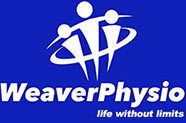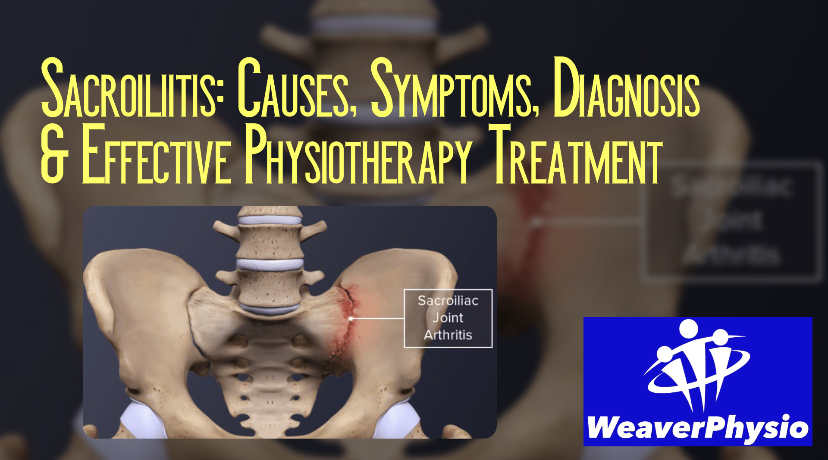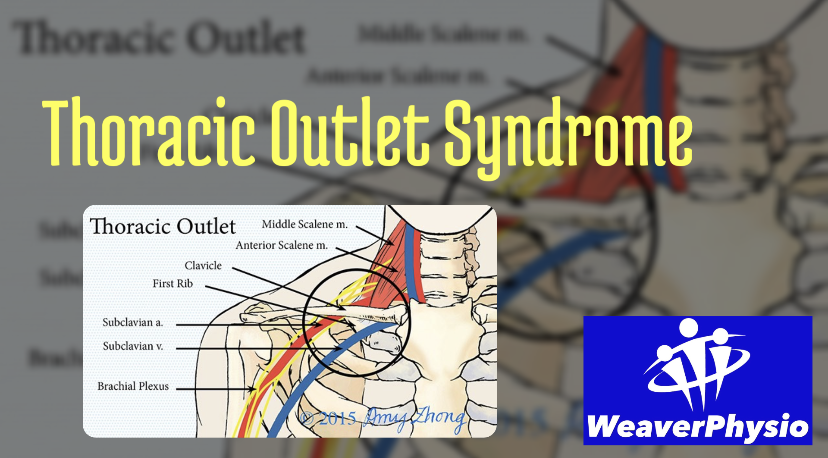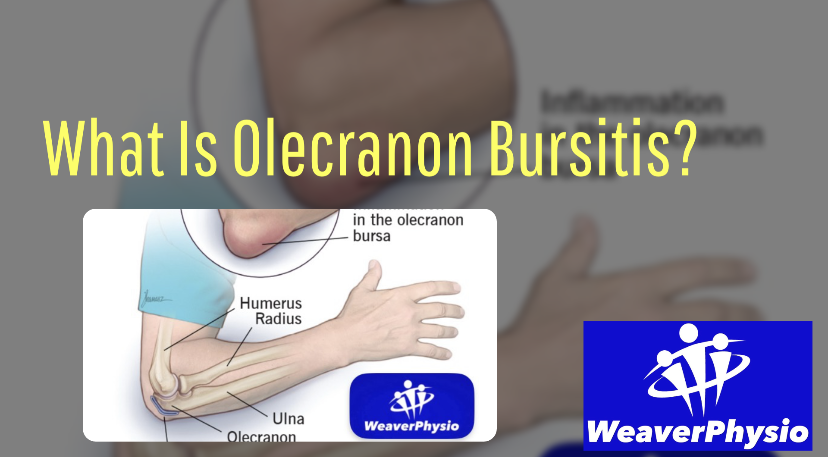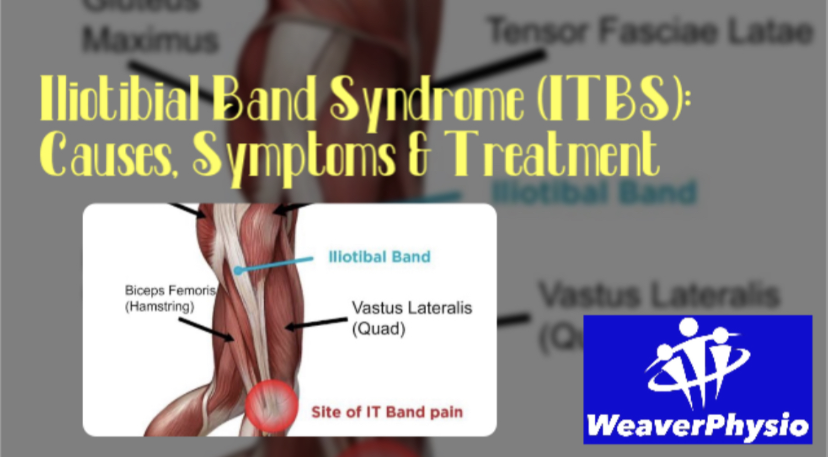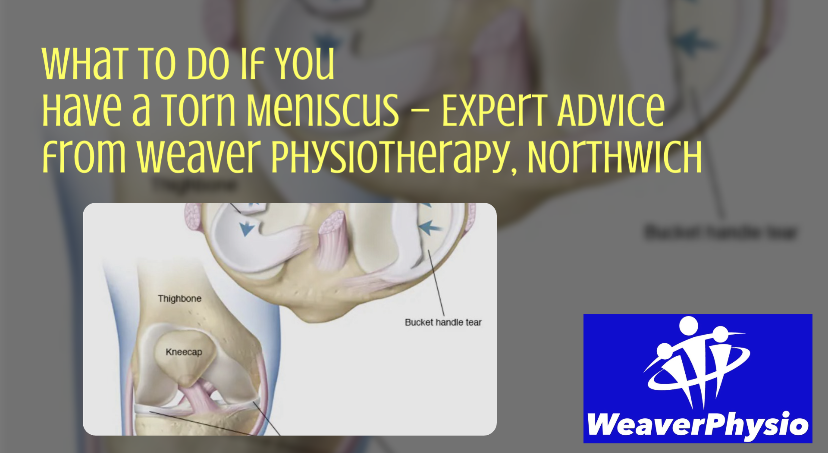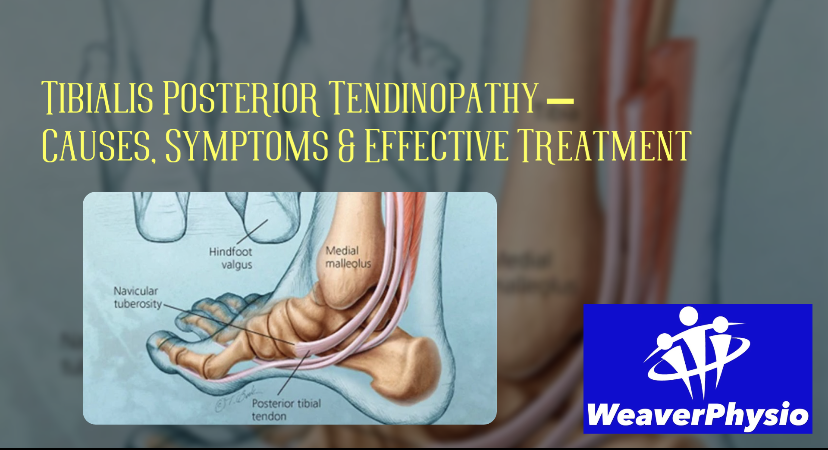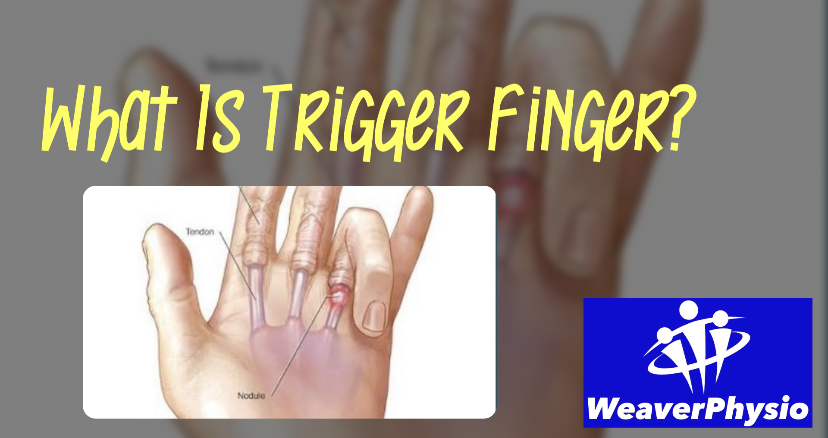Sports Massage Techniques at Weaver Physio
Northwich’s Experts in Recovery, Performance & Pain Relief
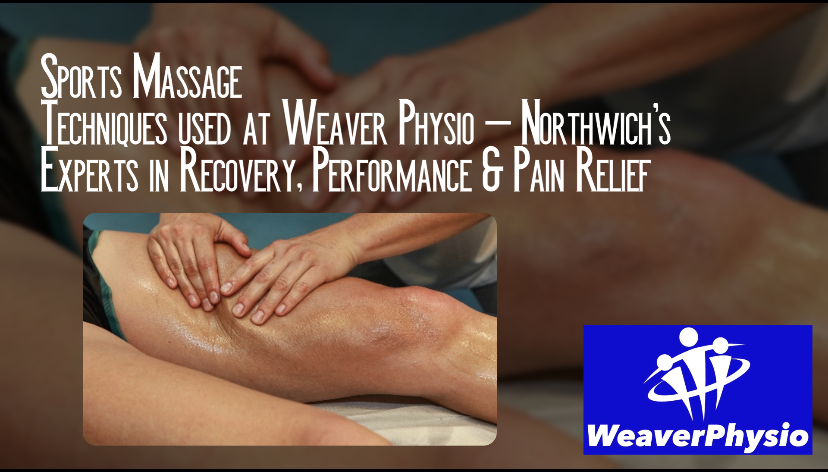
At Weaver Physio, we don’t just deliver a massage — we provide targeted, evidence-based sports massage therapy in Northwich that’s tailored to help you recover faster, prevent injury, and perform better. Whether you’re a runner, cyclist, gym-goer, or simply dealing with tightness from daily life or work stress, our skilled therapists use a wide variety of soft tissue techniques to unlock movement, reduce pain, and support your goals.
In this blog, we’ll break down the core sports massage techniques used at Weaver Physio, explaining how each works and why they’re so effective in improving mobility, speeding up recovery, and preventing recurring injuries.
⸻
Why Sports Massage Matters
Sports Massage is far more than a relaxing treatment. It’s a targeted approach to managing the body’s soft tissues — including muscles, tendons, fascia, and ligaments — to reduce tension, enhance circulation, promote tissue healing, and reduce the likelihood of injury. At Weaver Physio, sports massage is often used as part of an integrated treatment plan, especially for those in active or physically demanding lifestyles.
⸻
1. Myofascial Release (MFR)
What it is: A technique used to release the fascia — the connective tissue that surrounds and supports your muscles. Restrictions in the fascia can lead to reduced mobility, pain, and altered movement patterns.
How we apply it at Weaver Physio:
• Sustained, gentle pressure is applied to tight or “stuck” areas
• Helps loosen fascial restrictions and reduce pain
• Often used before deeper massage work to prepare the tissue
Common areas treated: Calves, hamstrings, quads, shoulders, lower back.
⸻
2. Deep Tissue Massage
What it is: A slow, focused technique that targets deeper layers of muscle and connective tissue. It’s ideal for treating chronic muscle tightness, postural issues, and old injury sites.
Benefits:
• Breaks down adhesions and scar tissue
• Promotes long-term improvements in mobility and posture
• Increases circulation and oxygen to stiff areas
At Weaver Physio, we combine this with stretching and movement re-education to reinforce the release.
⸻
3. Trigger Point Therapy
What it is: Trigger points are small knots in the muscle that refer pain to other parts of the body. This technique involves applying direct pressure to deactivate the trigger point.
What you might feel:
• Referred pain or “twitch” response during treatment
• A sense of release and improved range of motion afterward
Common trigger point areas: Upper traps, glute medius, calves, infraspinatus, hamstrings.
⸻
4. Cross-Fibre Friction
What it is: A technique used to treat tendon-related issues and scar tissue by working across the direction of the muscle or tendon fibres.
When we use it:
• For tendon injuries like Achilles tendinopathy, patellar tendonitis, or tennis elbow
• To stimulate healthy collagen formation during the healing process
• To break down adhesions post-injury
This method is particularly valuable for athletes and active individuals recovering from overload injuries.
⸻
5. Muscle Energy Techniques (MET)
What it is: An advanced stretching technique that uses voluntary muscle contractions against gentle resistance, followed by a stretch. It helps “reset” muscle tone and improve flexibility.
Why it works:
• Improves mobility while reducing strain
• Ideal for tight hamstrings, hip flexors, glutes, and neck muscles
• Encourages nervous system recalibration of muscle tone
MET is particularly useful for clients with chronic stiffness, reduced joint range, or recurring asymmetries.
⸻
6. Proprioceptive Neuromuscular Facilitation (PNF) Stretching
What it is: One of the most effective forms of stretching for improving flexibility, involving both passive and active muscle actions.
Used for:
• Post-training recovery
• Enhancing joint range of motion (e.g., hips, shoulders)
• Preparing for performance or addressing chronic flexibility issues
At Weaver Physio, we use PNF techniques as part of prehabilitation and performance programs, especially for runners and overhead athletes.
⸻
7. Instrument Assisted Soft Tissue Mobilisation (IASTM)
What it is: A technique using tools (like metal blades) to detect and treat soft tissue restrictions.
Why we use it at Weaver Physio:
• Helps break down adhesions in fascia or muscle
• Enhances tissue healing in stubborn or long-standing injuries
• Reduces pain and restores movement when hands-on methods reach limits
This technique is particularly helpful for areas like the IT band, forearm extensors, and Achilles tendon.
⸻
8. Sports-Specific Mobilisation & Stretching
Every athlete moves differently — which is why we integrate sport-specific techniques into every session. Whether it’s improving shoulder rotation for swimmers, spinal rotation for golfers, or hip mobility for runners, your massage is tailored to your unique movement demands.
We combine soft tissue techniques with:
• Joint mobilisations
• Dynamic stretching
• Postural correction exercises
This is key to ensuring that the effects of the massage carry over into real movement and performance.
⸻
9. Post-Massage Recovery Support
At Weaver Physio, your care doesn’t end with the massage. We support recovery with:
• Cold therapy or ice packs (if inflammation is present)
• Kinesiology taping to support healing tissue
• Foam rolling or home mobility exercises to sustain tissue gains
This integrated approach ensures the massage has a lasting effect and contributes to long-term movement health.
⸻
When Should You Book a Sports Massage?
Sports massage is ideal for:
• Injury prevention: Identify and address tightness before it causes issues
• Training recovery: Reduce post-workout soreness and enhance tissue repair
• Performance enhancement: Improve movement efficiency and muscular coordination
• Injury rehab: Assist in tissue healing and regain normal function
Whether you’re deep into a training block, bouncing back from injury, or prepping for an event, our sports massage in Northwich can make a real difference.
⸻
Why Choose Weaver Physio?
✅ Highly experienced sports massage therapists
✅ Chartered physiotherapists overseeing treatment protocols
✅ Advanced techniques used with precision and clinical reasoning
✅ Trusted by runners, gym-goers, cyclists, and sports teams across Cheshire
✅ Tailored care based on your sport, injury history, and movement patterns
Located in the heart of Northwich, our clinic is known for combining clinical expertise with hands-on skill — giving you real results that go beyond just temporary relief.
⸻
Final Thoughts
At Weaver Physio, our sports massage techniques go far beyond general massage. From deep tissue release to fascial mobility, trigger point therapy, and muscle activation, we tailor every treatment to meet your body’s needs — whether you’re looking to recover, restore, or perform at your best.
If you want to move better, feel stronger, and train without pain — book your Sports Massage in Northwich today with Weaver Physio.
📞 Call us on 01606 227484 or visit http://www.weaverphysio.com
⸻
#SportsMassageNorthwich #WeaverPhysio #DeepTissueMassage #SportsRecovery #InjuryPrevention #TriggerPointTherapy #MyofascialRelease #PhysioCheshire #NorthwichFitness #AthleteCare #SportsPhysio #PainFreePerformance #MassageForRunners #CyclingRecovery #IASTM #METtechnique #PNFstretching #MoveBetterFeelStronger

